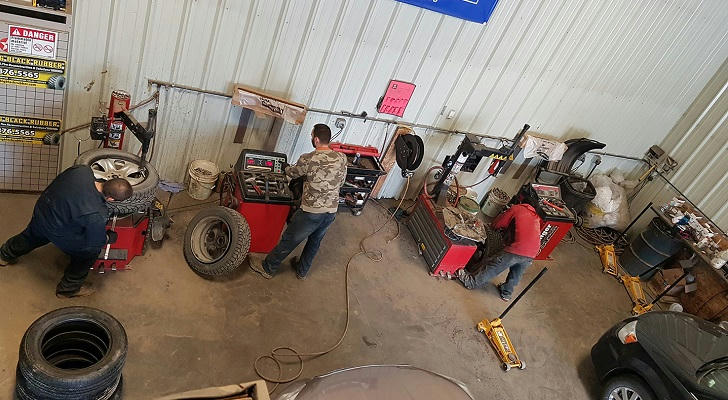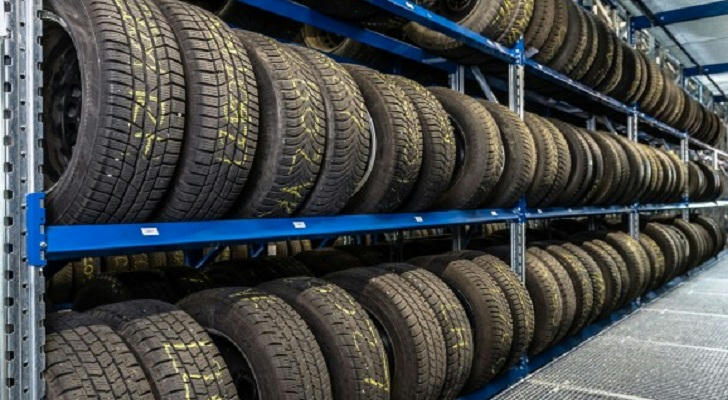Stop Driving on Worn-Out Tires! Everything You Need to Know About Replacements
Tires are often the most overlooked part of a vehicle until something goes wrong. But in reality, they are one of the most important parts of your vehicle for safety, fuel efficiency, and driving comfort. Whether you're a novice or a seasoned commuter, understanding all aspects of tire replacement can save you time, money, and possibly even your life.
This guide will cover the basic aspects of tire replacement services in the United States—from the types of services available to how to choose the right tire, warranty coverage, and more. Perfect for anyone looking to make informed decisions about vehicle performance and safety.

1. Types of Tire Replacement Services
Tire replacement isn’t just about taking off old tires and putting new ones on. Here are the most common services offered:
Standard Replacement: Removal of old tires and installation of new ones, including inflation.
Wheel Balancing: Ensures even weight distribution around the wheel to prevent vibrations.
Tire Rotation: Extends tire life by ensuring even tread wear.
Wheel Alignment: Adjusts the angles of your wheels to match manufacturer specs for optimal performance.
TPMS Reset: Modern vehicles come with a Tire Pressure Monitoring System (TPMS), which needs to be recalibrated after tire changes.
Mobile Services: Convenient on-site tire replacement, often available in urban and snowy areas.
2. Advantages of Replacing Tires on Time
Improved Safety: Worn-out tires have reduced grip, especially in wet or icy conditions, increasing accident risk.
Better Fuel Economy: Properly inflated and aligned tires reduce rolling resistance, improving gas mileage.
Enhanced Comfort: Fresh tires offer smoother rides and better noise control.
Cost Savings: Preventing uneven wear reduces the frequency of replacements and avoids damage to your suspension.

3. When Should You Replace Your Tires?
Not sure if it’s time? Here are the key indicators:
Tread Depth Below 6/32": Use a tread gauge or the penny test (Lincoln’s head should not be fully visible).
Age: Tires over 5-6 years old should be replaced, regardless of wear.
Visible Damage: Cracks, bulges, punctures, or exposed steel belts are red flags.
Driving Symptoms: Excessive vibration, pulling to one side, or reduced traction can all indicate tire issues.
4. Tire Warranty & After-Sales Support
Tire warranties vary by brand and type but generally include:
Mileage Warranties: Most brands offer 50,000 to 80,000 miles coverage.
Road Hazard Protection: Covers damage from potholes, nails, or other road debris.
Free Rotations and Balancing: Many sellers include free rotations during the life of the tire.
Trial Periods: Some retailers like Discount Tire and Michelin offer 30- to 60-day satisfaction guarantees.
Pro Tip: Always register your tires after purchase to activate warranty benefits.
5. Popular Tire Brands in the U.S.
With so many brands out there, it's helpful to know a few that are consistently rated well:
Michelin: Known for long-lasting tread and smooth ride.
Goodyear: Offers a wide range of tires for every condition and vehicle.
Bridgestone: Strong performance in wet conditions and high durability.
Continental: Excellent in performance and eco-friendliness.
Pirelli: Popular for luxury and sports vehicles.
Firestone: Affordable yet reliable options.
Cooper Tires: Great for budget-conscious buyers.

6. How to Choose the Right Tires for Your Car
When selecting tires, consider the following:
Driving Conditions: Live in a snowy region? Consider winter tires. Drive long distances? Opt for touring tires.
Vehicle Type: SUVs, trucks, and sedans all have different needs.
Tire Size: Check your vehicle’s manual or sidewall markings (e.g., 225/65R17).
Performance Needs: If you value speed and handling, performance tires may be best.
Budget: Don’t forget to factor in installation and alignment costs.
7. Quick Tips for Tire Maintenance
Check Pressure Monthly: Low pressure can reduce tire life and fuel efficiency.
Rotate Tires Regularly: Every 6,000–8,000 miles is ideal.
Inspect for Damage: Regularly look for punctures, uneven wear, and bulges.
Don’t Mix Tires: Stick to the same brand and type on all four wheels when possible.
Store Properly: If you use seasonal tires, keep them in a cool, dry place.
Final Thoughts
Tires are your vehicle’s only point of contact with the road—don’t underestimate their role in keeping you and your passengers safe. Whether you’re upgrading to a premium set or just need a basic replacement, understanding the what, when, and how of tire services will make you a more informed and confident driver.
